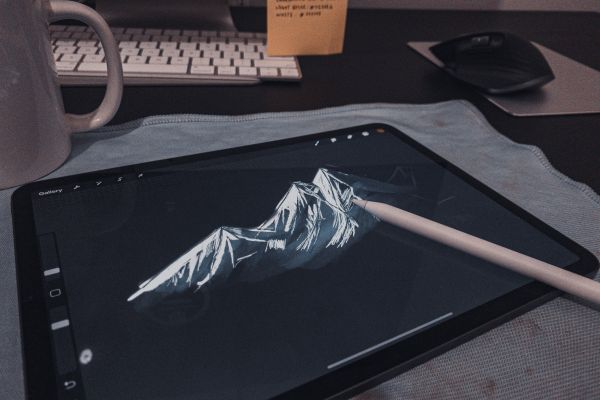Maximize Your Design Potential: Free Resources for Creative Freelancers
Are you a design freelancer looking to enhance your skills and boost your career? Look no further! In this article, we will provide you with valuable dicas para design freelancer (tips for design freelancers) and free resources specifically tailored for creative professionals like you.
As a design freelancer, it is important to continuously refine and expand your skills to stay competitive in the industry. With the help of these resources, you can unlock your full potential and take your design career to new heights.
Whether you are just starting out or have been in the industry for years, these free resources will provide you with actionable insights and inspiration to create exceptional designs and attract potential clients.
From design tutorials and software tools to creative communities and inspirational websites, these resources cover a wide range of topics that are essential for your growth as a design freelancer. You will discover new techniques, learn from industry experts, and find the support and inspiration you need to excel in your freelance career.
Ready to take your design skills to the next level? Let’s dive in and explore the wealth of free resources available to creative professionals like you. Get ready to unleash your creativity and maximize your potential!
Key Takeaways:
- Take advantage of free resources tailored for design freelancers to enhance your skills and boost your career.
- Continuous improvement is crucial in the competitive design industry – these resources will help you stay up-to-date with the latest techniques and trends.
- Build a strong online presence by showcasing your work through an impressive design portfolio.
- Effective time management is key to ensure productivity and meet client deadlines.
- Expand your client base by implementing effective marketing strategies and building a strong professional network.
Building a Strong Design Portfolio
Your design portfolio is the key to showcasing your talent and attracting potential clients as a freelance designer. In this section, we will provide you with valuable tips and strategies to build a strong design portfolio that effectively showcases your work in a competitive market. By implementing these portfolio tips, you’ll be able to create a compelling portfolio that leaves a lasting impression on clients.
Include Essential Elements
When building your design portfolio, it’s important to include the essential elements that highlight your skills and expertise. These elements may include:
- High-quality visual samples of your work
- A clear and concise bio or introduction
- Client testimonials or reviews
- Information about your design process or methodology
- Contact information for potential clients
By including these elements, you provide potential clients with a comprehensive understanding of your capabilities and professionalism, setting you apart from other freelancers.
Organize Your Portfolio
An organized and well-structured portfolio is essential for easy navigation and a positive user experience. Consider the following tips to effectively organize your design portfolio:
- Categorize your work based on project type or industry
- Create a logical flow within each category to guide viewers
- Showcase your strongest and most relevant work upfront
- Maintain consistency in design and layout throughout your portfolio
By organizing your portfolio in a user-friendly manner, you make it easier for potential clients to explore and appreciate your work.
Make Your Portfolio Stand Out
In a competitive industry, it’s important to make your design portfolio stand out from the crowd. Consider implementing the following strategies to grab the attention of potential clients:
- Showcase a variety of projects to demonstrate your range of skills
- Use visually captivating images and graphics to engage viewers
- Add case studies or explanations behind your design decisions
- Highlight any accolades, awards, or recognition you have received
- Stay up to date with current design trends and incorporate them into your portfolio
By following these tips, you can create a unique and memorable design portfolio that sets you apart as a freelancer. Remember, your portfolio is an ongoing project, so continue to update and refine it as you gain more experience and create new work.
Effective Time Management for Design Freelancers
As a design freelancer, mastering time management is essential for maintaining productivity and meeting client deadlines. By implementing effective time management techniques, you can streamline your workflow, increase efficiency, and make the most of your working hours. Here are some valuable tips to help you optimize your time management and enhance your freelance design career.
Prioritize Tasks
One of the keys to effective time management is prioritizing your tasks. Start each day by creating a to-do list and identifying the most important and time-sensitive projects. By focusing on high-priority tasks first, you can ensure that critical work is completed on time. Use tools like project management software or digital calendars to organize your tasks and set realistic deadlines.
Create a Freelance Workflow
Developing a structured freelance workflow can significantly improve your time management efficiency. Determine the stages of your design process, from gathering client requirements to finalizing project deliverables. Create a step-by-step workflow that suits your working style and incorporates time for feedback and revisions. By following a consistent workflow, you can minimize delays, enhance client communication, and efficiently move through each project.
Eliminate Distractions
Distractions can eat up valuable time and hinder your productivity. When working on design projects, eliminate distractions by turning off notifications on your devices and closing unnecessary tabs and applications. Consider using productivity tools that block access to social media or other distracting websites during designated work periods. Prioritizing a distraction-free environment allows you to fully focus on your design work and complete tasks more efficiently.
Set Realistic Deadlines
Setting realistic deadlines is crucial for effective time management as a design freelancer. While it’s essential to meet client expectations, it’s equally important to ensure that you have sufficient time to produce quality work. Avoid overcommitting and creating unrealistic timelines that may lead to rushed or subpar designs. Communicate openly with clients about project timelines and negotiate deadlines that strike a balance between speed and quality.
Take Regular Breaks
While it may seem counterintuitive, taking regular breaks can actually boost your productivity and creativity. Incorporate short breaks into your work schedule to rest and recharge. Stepping away from your computer or workspace allows your mind to relax and rejuvenate, preventing burnout and enhancing focus when you return to your design tasks.
By implementing these effective time management techniques into your freelance workflow, you can optimize your productivity, meet client deadlines, and achieve success in your design career. Prioritize tasks, create a structured workflow, eliminate distractions, set realistic deadlines, and remember to take regular breaks. By managing your time effectively, you’ll be able to maximize your efficiency and produce exceptional design work.
Growing Your Client Base as a Design Freelancer
As a design freelancer, expanding your client base is essential for success. In this section, we will share valuable tips and strategies for acquiring new clients and growing your freelance business. From client acquisition to freelance marketing and networking tips, these resources will help you attract and retain valuable clients to elevate your career.
Effective Client Acquisition Strategies
- Identify your target audience: Understand the specific industries or niches that align with your design expertise. This will help you focus your marketing efforts and tailor your services to meet their needs.
- Build a compelling online portfolio: Showcase your best work on your website or portfolio platform to impress potential clients. Highlight projects that demonstrate your skills and expertise in various design disciplines.
- Leverage social media: Utilize platforms like Instagram, LinkedIn, and Behance to promote your work and connect with potential clients. Engage with relevant communities and share valuable content to establish yourself as a thought leader in your field.
- Offer referral incentives: Encourage your existing clients to refer you to their contacts by offering incentives such as discounts or exclusive perks. Word-of-mouth recommendations can be a powerful tool for client acquisition.
Freelance Marketing Techniques
- Create a professional website: Establish a strong online presence by building a well-designed website that showcases your work, services, and contact information. Optimize it for search engines to improve your visibility.
- Produce valuable content: Create blog posts, videos, or tutorials that provide helpful insights and tips related to your design niche. This positions you as an expert and attracts potential clients to your website.
- Attend industry events and conferences: Networking is crucial for expanding your client base. Attend design conferences, workshops, or local meetups to connect with fellow professionals and potential clients.
- Collaborate with other creatives: Partner with complementary professionals like photographers or copywriters to offer bundled services or cross-promote each other. This can broaden your reach and expose you to new client opportunities.
Networking Tips for Design Freelancers
- Join professional associations or organizations: Become a member of design associations or online communities to connect with like-minded individuals and potential clients. Engage in discussions and share your expertise to build relationships.
- Utilize online platforms: Join design-related forums, groups, or niche-specific communities to connect with peers and showcase your skills. Participate actively in discussions and offer valuable insights to establish yourself as a respected professional.
- Attend industry meetups and events: Stay updated on local design events and attend them to meet industry influencers, potential clients, and fellow freelancers. Bring your business cards and don’t forget to follow up after the event.
- Offer pro bono or discounted work: Volunteering your design services for a cause or offering discounted rates to non-profit organizations can help you gain exposure, build connections, and enhance your portfolio.
By employing these client acquisition, freelance marketing, and networking tips, you can expand your client base, attract valuable clients, and elevate your career as a design freelancer.
By utilizing the free resources and tips provided in this article, you can maximize your design potential as a freelancer. Building a strong design portfolio is crucial in effectively showcasing your work and impressing potential clients. Remember to include essential elements, organize your portfolio thoughtfully, and implement strategies that make it stand out in the competitive market.
Effective time management is another key aspect for design freelancers. Prioritize your tasks, create a freelance workflow, and implement productivity tips to make the most of your working hours. By managing your time effectively, you can meet deadlines and ensure optimal productivity.
Growing your client base is essential for success in the freelance world. Implement effective marketing techniques and utilize networking tips to acquire new clients and expand your freelance business. Establishing and nurturing client relationships will help you attract valuable clients and elevate your career.
In conclusion, these insights and strategies will empower you to thrive as a design freelancer. Take advantage of the valuable resources provided, unleash your creativity, and pave your path to success in the competitive world of design freelancing.





